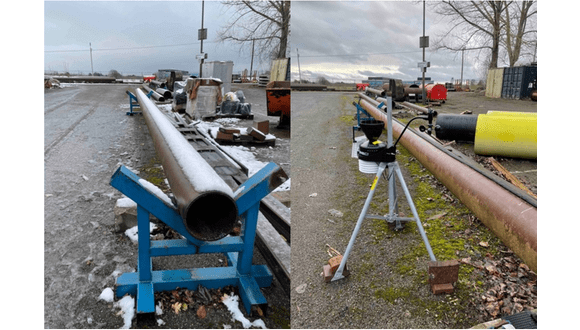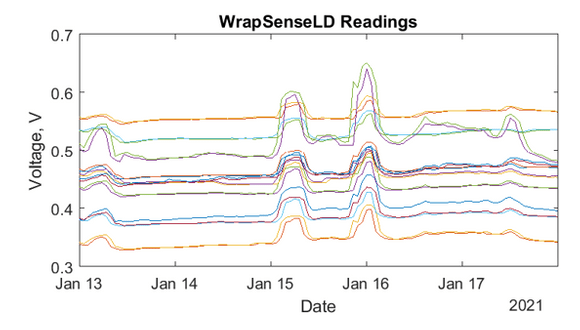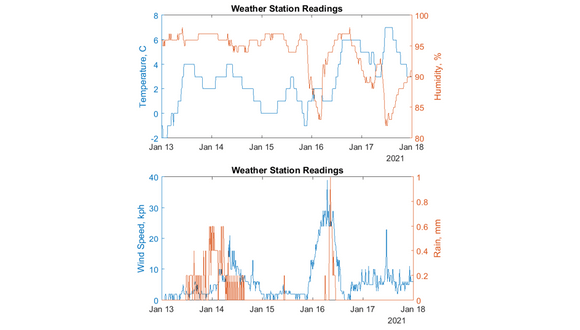Wed, 03 February, 2021
WrapSense is an InnovateUK collaborative project between Direct-C, TrackWise and TWI, aiming to research, develop and validate novel technologies for hydrocarbon leakage detection.
The technology is based on a novel highly sensitive nano-composite coating material capable of detecting even the slightest concentration of liquid hydrocarbons coming into direct contact with it. This makes it a highly effective technology for detecting leakages in oil and gas and aerospace applications. The sensor functions by continuously monitoring the electrical resistance of the nano-composite, and reporting significant changes in this resistance.
Large-scale environmental testing has now begun, which entails installing the WrapSenseLD technology on a representative steel pipe and subjecting it to 6-months of winter weather exposure. The objectives of this test are to:
- Validate sensor performance under environmental loading
- Correlate slight sensor disturbances to the relevant weather information
A 10 metre section of WrapSenseLD was made in November 2020, featuring ten 1-metre long sensors, which are interrogated in sequence. The sensors were installed on a 10 metre long, 300 mm OD steel pipe at TWI’s open-field yard in December 2020, allowing the environmental testing to start in mid-January 2021. The sensors are connected to an IoT Controller Unit, which provides the sensors’ data transmission over a GSM network or via satellite, reports sensors readings every hour and features a standalone battery. The sensors’ data can be accessed in real-time by using a dedicated web portal called Nektar.
In addition, a professional wireless weather station (Davis Vantage Pro2) was set-up next to the WrapSenseLD in order to correlate weather conditions and/or environmental damage to the sensors’ readings, ultimately assessing the sensors’ performance. The Davis Vantage Pro2 records temperature, wind direction, wind speed, rainfall and humidity (every minute), which are the key weather conditions to be employed in the sensors’ performance assessment.
Figure 1 shows the steel pipe and (right) the WrapSenseLD sensor (black stripe) installed at 12 O’clock position and the weather station on its supporting tripod.
 Figure 1. (left) Pipe before installation (right) WrapSenseLD installed with Weather Station
Figure 1. (left) Pipe before installation (right) WrapSenseLD installed with Weather Station
Although a relatively short time has passed since the start of the test, it can be observed that slight disturbances are being captured by the sensors, for example on January 16 as shown in Figure 2. These disturbances are to be correlated with the environmental data collected by the weather station, which is shown in Figure 3 for the same period of time.
 Figure 2. WrapSenseLD readings over a 5-day period
Figure 2. WrapSenseLD readings over a 5-day period
 Figure 3. Weather Station data over a 5-day period
Figure 3. Weather Station data over a 5-day period
It appears that the sensors are not sensitive to the external temperature and that the disturbances can be related to a drop in humidity and rain with a plausible delay in the sensors’ response. These issues will be investigated further as more data becomes available towards the end of the 6-month exposure test. Stay tuned for more updates for this technology validation process.
For more information on the environmental testing, you can email project partners, Direct C at info@direct-c.ca, or contact us, below.
The Wrapsense Project is funded under InnovateUK Project Number 105611